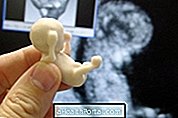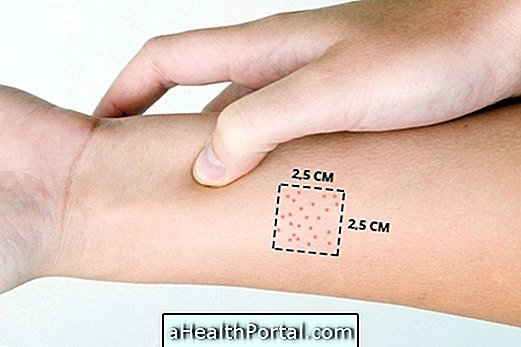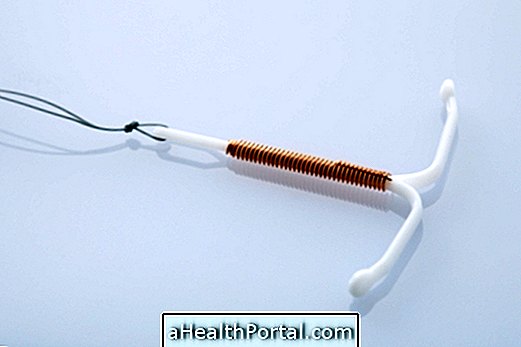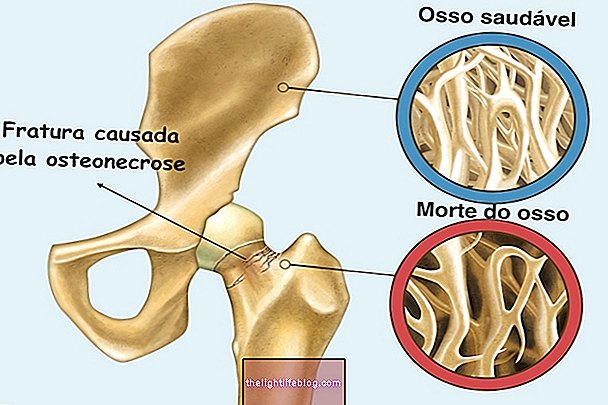"Placenta anterior" or "placenta posterior" are medical terms used to describe the place where the placenta fixed after fertilization and are not related to possible complications for pregnancy.
Knowing the location is important because it helps to predict when a woman is expected to start feeling fetal movements. In the case of the anterior placenta it is normal for the baby's movements to be felt later, while in the posterior placenta they can be felt earlier.
To find out where the placenta is located, it is necessary to have an ultrasound scan, which is performed by the obstetrician-gynecologist and is part of prenatal consultations.

When it is normal to feel fetal movements
Fetal movements usually begin to be felt between 18 and 20 weeks of pregnancy, in the case of being the first child, or 16 to 18 weeks of pregnancy, in other pregnancies. See how to identify fetal movements.
How the placenta affects fetal movements
Depending on the location of the placenta, the intensity and onset of fetal movements may vary:
Anterior placenta
The anterior placenta is located at the front of the uterus and can be attached to both the left side and the right side of the body.
The anterior placenta does not affect the baby's development, however, it is common for fetal movements to be felt later than normal, that is, from 28 weeks of gestation. This is because, as the placenta is located at the front of the body, it cushions the baby's movements and, therefore, it may be more difficult to feel the baby moving.
If, after 28 weeks of gestation, the baby's movements are not felt, it is important to consult the obstetrician-gynecologist to make an appropriate assessment.
Posterior placenta
The posterior placenta is located at the back of the uterus and can be attached to both the left and right sides of the body.
Since the posterior placenta is located at the back of the body, it is common for the baby's movements to be felt earlier than during a pregnancy with an anterior placenta, within the period that is considered normal.
If there is a decrease in fetal movements compared to the baby's normal pattern, or if the movements do not start, it is recommended to consult the obstetrician-gynecologist so that an evaluation of the baby can be made.
Fungal Placenta
The fundal placenta is located at the top of the uterus and, as in the posterior placenta, the baby's movements are felt, on average, between 18 and 20 weeks of pregnancy, in the case of being the first child, or 16 to 18 weeks , in other pregnancies.
The alarm signals are the same as those of the posterior placenta, that is, if there is a reduction in fetal movements, or if they take longer to appear, it is important to consult the obstetrician-gynecologist.
Can the location of the placenta pose risks?
The posterior, anterior or fundal placenta do not present risks for pregnancy, however, the placenta can also be totally or partially fixed in the lower part of the uterus, close to the opening of the cervix, and is known as the placenta previa. In this case, there is a risk of premature birth or hemorrhage, due to the location of the uterus where it is found, and it is important to carry out more regular monitoring with the obstetrician-gynecologist. Understand what the placenta previa and how the treatment should be.
Was this information helpful?
Yes No
Your opinion is important! Write here how we can improve our text:
Any questions? Click here to be answered.
Email in which you want to receive a reply:
Check the confirmation email we sent you.
Your name:
Reason for visit:
--- Choose your reason --- DiseaseLive betterHelp another personGain knowledge
Are you a health professional?
NoMedicalPharmaceuticalsNurseNutritionistBiomedicalPhysiotherapistBeauticianOther
Bibliography
- NHS. Reduced Fetal Movement (RFM) in Pregnancy Guidelines. 2019. Available at:. Accessed on 17 Dec 2020
- ROYAL COLLEGE OF OBSTETRICIANS & GYNAECOLOGISTS. Reduced Fetal Movements. 2014. Available at:. Accessed on 17 Dec 2020
- ROYAL COLLEGE OF OBSTETRICIANS & GYNAECOLOGISTS. Your baby’s movements in pregnancy. 2019. Available at:. Accessed on 17 Dec 2020
- MAGANN, E.F. et al .. Second trimester placental location as a predictor of an adverse pregnancy outcome. Journal of Perinatology. Vol.27. 9-14, 2007























